Tanghulu (candied fruit skewers) first caught my eye during a chilly walk through a Beijing market years ago. A line of vibrant red hawthorns glistened like glass in the winter light, skewered like little jewels and crunching delightfully between each bite. I didn’t know it then, but I’d stumbled onto a centuries-old tradition—and the beginning of a delicious obsession with Tanghulu (candied fruit skewers).
In this article, I’m going to take you through the colorful, crispy world of Tanghulu (candied fruit skewers). We’ll uncover where this beloved Chinese treat comes from, what makes it so different from regular candied fruit, and how you can make your very own skewers right at home. Along the way, I’ll share the tips I’ve picked up (and the sticky mistakes I’ve made), plus creative modern twists that make Tanghulu (candied fruit skewers) a joy to personalize.
Looking for inspiration? Try our fruity take on summer with this mango bingsu recipe.
Whether you’re a curious cook, a sugar-lover, or just someone who loves beautiful food that crackles with each bite, this guide will help you bring Tanghulu (candied fruit skewers) from the vibrant streets of China to your very own kitchen. Ready to dive in? Let’s start at the beginning.
The Origins and Cultural Significance of Tanghulu
A Taste of Northern China: Where Tanghulu Began
Tanghulu (candied fruit skewers) traces its roots back over 800 years to Northern China during the Song Dynasty. Legend has it that an imperial concubine fell gravely ill, and no remedy could cure her—until a healer suggested skewered hawthorn berries coated in rock sugar syrup. Her health returned, and Tanghulu became a household treat from that day on.
What began as a medicinal concoction slowly evolved into a cherished street snack. In cities like Beijing and Tianjin, winter wouldn’t be complete without spotting vendors carrying tall racks of shiny red skewers. It’s more than just a dessert—it’s tradition, nostalgia, and joy on a stick.
As someone who learned to love food by traveling and tasting, I find Tanghulu’s origin story incredibly charming. It’s not just candy; it’s culture preserved in sugar.
The Symbolism of Fruit and Sugar in Chinese Traditions
In Chinese symbolism, fruits often carry deep meanings. Hawthorn berries—the original star of Tanghulu—are associated with good fortune and digestive health. When encased in sugar, these berries represent the perfect balance of health and sweetness, hardship and reward.
The hard sugar coating itself is more than aesthetic. In the cold winters of northern China, it offered a natural preservation method and a pleasant crackle that contrasted beautifully with the soft fruit inside. This duality—crunchy on the outside, juicy inside—represents yin and yang, a harmony cherished in Chinese philosophy.
Tanghulu is traditionally eaten during Chinese New Year and other winter festivals. It’s a symbol of celebration, and each bite connects generations through flavor and memory.
Print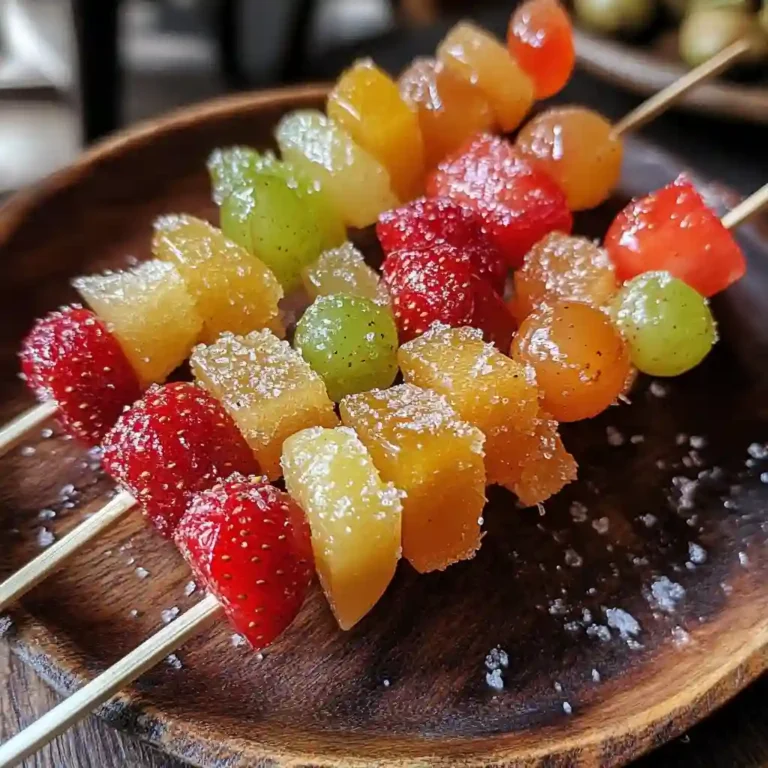
Tanghulu (Candied Fruit Skewers): A Sweet Crunchy Treat You’ll Crave Again and Again
A sweet, crunchy Chinese street snack made by dipping fresh fruit in a clear, hard candy shell. Tanghulu offers a unique crackle with every bite, balancing tart fruit with a glossy sugar glaze.
- Total Time: 30 minutes
- Yield: 6-8 skewers
Ingredients
- Fresh fruit (e.g., strawberries, grapes, blueberries, kiwi)
- 2 cups granulated white sugar
- 1 cup water
- Optional: 1/2 teaspoon lemon juice
- Bamboo skewers
Instructions
- Wash and thoroughly dry all fruit.
- Thread fruits onto bamboo skewers, keeping sizes uniform per skewer.
- In a medium saucepan, combine sugar and water. Heat over medium heat without stirring.
- Optional: Add lemon juice to reduce crystallization.
- Bring syrup to 300°F (hard crack stage). Test by dropping a bit into ice water—if it hardens and snaps, it’s ready.
- Dip each skewer into syrup, twirl quickly to coat evenly.
- Place dipped skewers on parchment paper or silicone mat to harden.
- Let cool completely before serving.
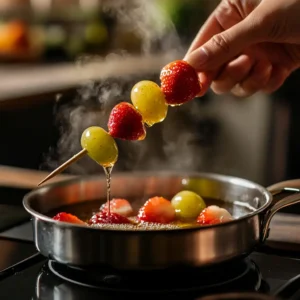
Notes
Avoid stirring the syrup while boiling to prevent crystallization. Fruit must be completely dry to help the candy coating stick. Best enjoyed within a few hours of making.
- Prep Time: 15 minutes
- Cook Time: 15 minutes
- Category: Dessert
- Method: Stovetop
- Cuisine: Chinese
Nutrition
- Serving Size: 1 skewer
- Calories: 110
- Sugar: 22g
- Sodium: 0mg
- Fat: 0g
- Saturated Fat: 0g
- Unsaturated Fat: 0g
- Trans Fat: 0g
- Carbohydrates: 28g
- Fiber: 1g
- Protein: 0g
- Cholesterol: 0mg
What is Tanghulu (Candied Fruit Skewers)?
Breaking Down the Basics of Tanghulu
At its core, Tanghulu (candied fruit skewers) is delightfully simple: fresh fruit threaded onto bamboo sticks, then dipped in hot sugar syrup that hardens into a clear, glassy shell. The result? A treat that’s both crisp and juicy, sweet and tart. It’s one of those rare bites that surprises you every time.
Traditionally, hawthorn berries were used because of their tartness, which balances the sugar coating beautifully. But these days, you’ll find all sorts of fruit skewered and candied—strawberries, grapes, kiwis, even cherry tomatoes! Each version brings its own flavor and texture twist to this beloved street snack.
What makes tanghulu stand out from other desserts is that magical “crack” when you bite into it. The sugar coating shatters delicately, giving way to the fresh, juicy fruit underneath. It’s not just a taste—it’s an experience.
Tanghulu vs. Candied Fruit: What’s the Difference?
People often confuse Tanghulu with traditional candied fruit, but they’re quite different—both in method and result.
Candied fruit is typically simmered slowly in sugar syrup over time, allowing the fruit to absorb the sweetness fully. The final texture is soft, chewy, and dense. You’ll see it used in fruitcakes, sweet buns, or as standalone treats.
Tanghulu, on the other hand, is quick and all about the crunch. The fruit remains fresh and raw inside, while the sugar forms a brittle shell on the outside. There’s no slow cooking involved—just a swift dip and a cool-down. It’s about contrast: cold and hot, soft and hard, fresh and candied all in one bite.
Personally, I love how Tanghulu maintains the integrity of the fruit. You taste nature and sugar in one go. It’s a recipe that respects both ingredients—without overpowering either.
The Art of Making Tanghulu (Candied Fruit Skewers) at Home
Essential Ingredients and Equipment Checklist
Before we begin, here’s what you’ll need to create your own Tanghulu (candied fruit skewers) at home. One of the things I love most about this recipe? You don’t need fancy tools—just a little care and the right timing.
Ingredients:
- Fresh fruit (strawberries, grapes, blueberries, kiwi, etc.)
- Granulated white sugar (avoid brown sugar—it burns too fast)
- Water
- Optional: lemon juice (to help prevent crystallization)
Equipment:
- Bamboo skewers (or safe alternatives)
- Medium saucepan
- Candy thermometer (recommended but not required)
- Parchment paper or silicone mat
- A bowl of ice water (to test sugar readiness)
- Tongs or heatproof gloves
I remember making my first batch of Tanghulu (candied fruit skewers) using only what I had in my tiny Airbnb kitchen in Seoul. No thermometer, no mat—just skewers and determination. It wasn’t perfect, but the excitement of hearing that first crack made it all worth it.
Why Timing and Temperature Are Key in Sugar Coating
Here’s the thing—Tanghulu’s magic lies in the sugar stage known as hard crack. That happens around 300°F (150°C). If the sugar doesn’t hit that point, it won’t harden properly. Too low, and it stays sticky. Too high, and it burns.
If you don’t have a candy thermometer, don’t worry. I used the old-school method for a long time. Simply drop a bit of the syrup into ice water. If it forms brittle threads that snap easily, it’s ready to coat your Tanghulu (candied fruit skewers) just right.
Pro Tips:
- Do not stir the syrup while boiling. Stirring introduces crystals, which ruin the smooth, glassy finish (more on this in Part 5).
- Keep the fruit completely dry. Even a drop of water can cause the sugar to seize.
- Work quickly. Sugar sets fast. Dip, twirl, cool—then repeat for each batch of Tanghulu (candied fruit skewers).
Making Tanghulu (candied fruit skewers) is like performing a dance. Once you’ve got your rhythm, it becomes a joyful, almost meditative process. Trust me, once you hear that first crunch, you’ll be hooked.
Choosing the Best Fruits for Tanghulu
Traditional vs. Modern Fruit Choices for Skewering
Traditionally, Tanghulu is made using Chinese hawthorn berries, known locally as shan zha. These small, tart red fruits are perfect because their natural tanginess balances the sweet sugar shell beautifully. But if you’re not in China, don’t worry—you’ve got options.
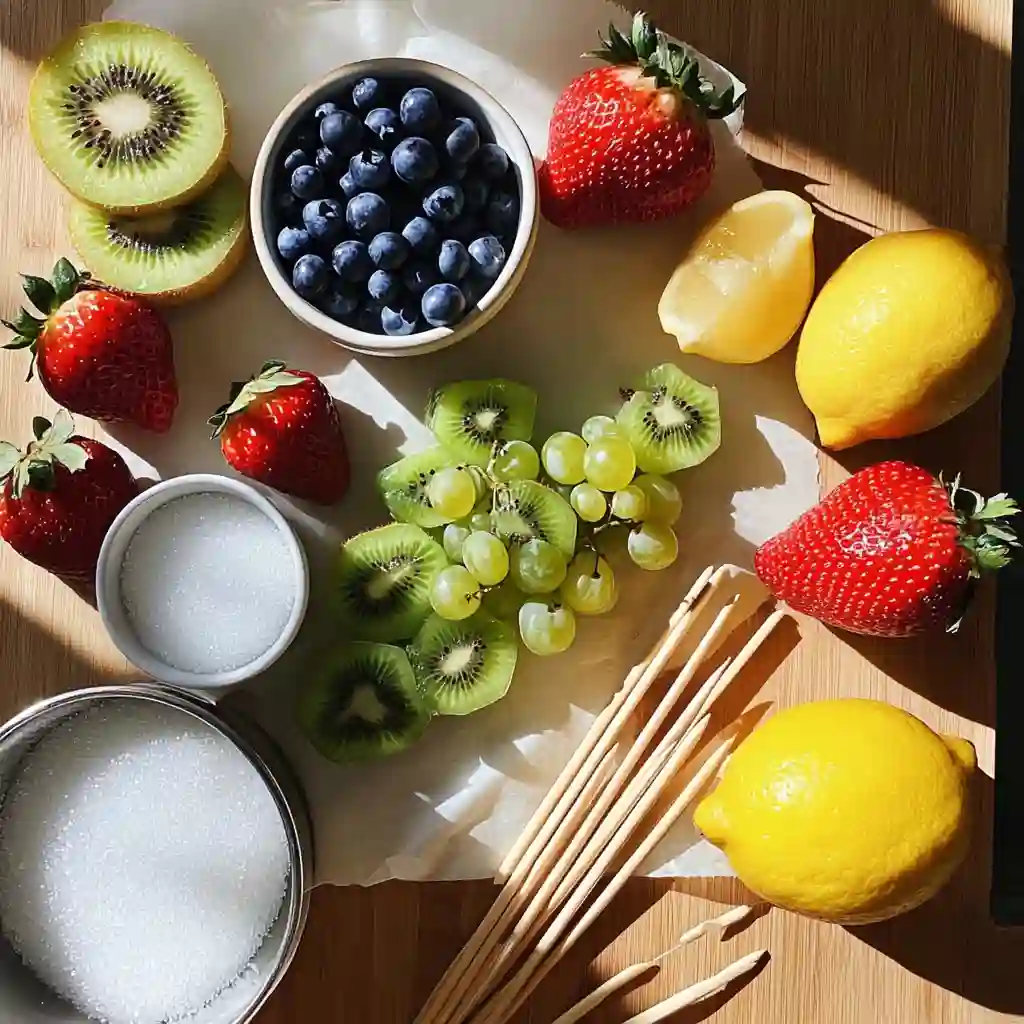
Over the years, home cooks and street vendors have started experimenting with a wide variety of fruits. Here are some great choices:
| Traditional Choices | Modern Alternatives |
|---|---|
| Chinese hawthorn | Strawberries |
| Chinese dates | Seedless grapes |
| Kumquats | Kiwi slices |
| Crabapples | Pineapple chunks |
Fruits like strawberries and grapes are my go-to. They’re the perfect size, have the right moisture content, and pack a juicy pop that complements the hard sugar shell. I also love mixing and matching fruits on a single skewer for a rainbow effect—it’s eye candy and real candy in one.
How Fruit Texture Affects Your Tanghulu Crunch
The texture of the fruit plays a major role in the final result. Ideally, you want fruit that’s:
- Firm but not hard
- Juicy but not overly wet
- Naturally tart or slightly acidic
Avoid super soft fruits like bananas or overripe peaches—they tend to fall apart or leak moisture, which ruins the sugar coating. I once tried using raspberries, and while they looked gorgeous, the syrup just slipped right off.
Pro Tips:
- Wash and thoroughly dry your fruit. Any moisture will cause the sugar to seize.
- Chill your skewers before dipping. This helps the syrup harden faster.
- Try to keep fruit sizes consistent on each skewer for even coating.
Tips, Tricks & Troubleshooting Your Tanghulu (Candied Fruit Skewers)
Why You Shouldn’t Stir Tanghulu Sugar Syrup
One of the first lessons I learned—after ruining two pots of sugar—is that you should never stir the syrup while it’s boiling. I know, it’s tempting to give it a little swirl, especially when you see crystals forming on the edge. But don’t.
Stirring causes sugar crystallization, which turns your smooth, glassy syrup into a grainy, sandy mess. Once that happens, it’s game over—you can’t fix it, and the coating won’t harden correctly on your Tanghulu (candied fruit skewers).
Instead:
- Let the sugar and water dissolve naturally over medium heat.
- Use a wet brush to gently wash down the sides of the pot to prevent crystals.
- Don’t walk away—this syrup goes from perfect to burnt in seconds.
Tanghulu (candied fruit skewers) taught me patience. It’s a quiet process that rewards those who pay attention.
Common Tanghulu Fails and How to Fix Them
Even when you follow directions, Tanghulu (candied fruit skewers) can throw you curveballs. Here are some common issues I’ve faced—and how I solved them:
| Problem | Cause | Fix |
|---|---|---|
| Sugar coating is soft/sticky | Syrup didn’t reach hard crack stage | Reheat until it hits 300°F or passes the ice water “snap test” |
| Sugar slips off the fruit | Fruit is too wet | Pat dry thoroughly and refrigerate before dipping |
| Syrup crystallized in the pot | Stirring or impurities | Start fresh, don’t stir, and use a clean pot |
| Coating looks cloudy | Sugar not pure or uneven heat | Use white granulated sugar and even flame |
| Fruit slides off skewer | Fruit too heavy or skewer too thin | Use firm fruit and thicker skewers for heavier pieces |
Check out our banana mug cake for a cozy kitchen experiment if you’re craving something warm and forgiving after a Tanghulu (candied fruit skewers) trial run.
Sifaw’s Tip: If the syrup starts to harden while you’re dipping your Tanghulu (candied fruit skewers), gently reheat it—but don’t overdo it or it’ll caramelize and turn amber. We want clear and crisp, not toffee!
Creative Twists on Traditional Tanghulu
Using Herbs, Spices, and Extracts for Unique Flavors
The classic Tanghulu (candied fruit skewers) is all about that pure sugar snap, but once you’ve mastered the basics, you can start getting playful. A little creativity can take your skewers from simple to unforgettable.
Here are some subtle ways I’ve infused flavor into my batches:
- Citrus zest (orange or lemon) added to the syrup gives a bright, tangy lift.
- Mint leaves or basil tucked between fruits add an aromatic layer that smells amazing.
- A touch of vanilla extract or rose water in the sugar syrup can elevate the whole experience.
- Cinnamon sticks or star anise simmered briefly in the syrup bring warm, cozy notes.
Just remember, a little goes a long way—don’t overpower the fruit’s natural taste. Tanghulu is all about contrast and clarity.
I once added a hint of lavender essence, and paired it with strawberries—it was like eating springtime on a stick.
Colorful Combinations and Fruit Pairings to Try
The visual appeal of Tanghulu is half the joy. Colorful combinations not only taste great but look incredible when displayed at parties, holidays, or even as edible gifts.
Here are a few pairing ideas that work beautifully:
| Fruit Combo | Flavor Notes |
|---|---|
| Strawberry + Kiwi + Grape | Sweet, tangy, and juicy |
| Pineapple + Blueberry + Apple | Tropical burst with crunch |
| Mandarin Orange + Cranberry | Bright and tart |
| Cherry Tomato + Plum | Sweet-savory twist |
| Peach + Blackberry | Soft and jammy with crunch |
Another idea I love? Sprinkle a tiny pinch of sea salt or crushed chili flakes on the syrup just before it hardens. It turns the sweet fruit into something complex and deeply satisfying.
Creative Tanghulu is a playground for adventurous eaters. Think of the sugar shell as your canvas, and go wild—with balance, of course.
Serving and Storing Tanghulu (Candied Fruit Skewers)
Best Ways to Present Tanghulu (Candied Fruit Skewers) for Events or Gifting
Once you’ve made your Tanghulu (candied fruit skewers), it’s time for the best part—serving it up! Whether it’s for a festive gathering, a birthday table, or just a surprise treat for the kids, presentation makes a big difference.
Here are my favorite ways to show off these beautiful candied fruit skewers:
- Fruit bouquet style: Stick skewers into a foam base wrapped in decorative paper. It looks like an edible flower arrangement.
- Individual cups: Serve each skewer in a clear cup lined with wax paper—perfect for party portions.
- Mini boxes with ribbon: Ideal for gifting, especially around Lunar New Year or Valentine’s Day. Add a note for extra charm.
- Stand-up displays: Use a small colander turned upside down to hold skewers upright—simple, functional, and eye-catching.
Once, I surprised a friend with a box of mixed-fruit Tanghulu (candied fruit skewers) tied in gold twine. She thought it was glass candy art—until she took a bite and her face lit up with delight.
Storage Tips to Keep Your Tanghulu (Candied Fruit Skewers) Crunchy
Tanghulu (candied fruit skewers) are best enjoyed fresh—ideally within an hour or two of making them. But sometimes life gets in the way, and you want to save a few sticks for later.
Here’s how to store them properly:
- Keep them cool and dry. Humidity is the enemy. Store Tanghulu in an airtight container at room temperature.
- Don’t refrigerate. Cold temps can cause the sugar to sweat and become sticky.
- Use parchment paper. Line the container so the candy coating doesn’t stick.
- Avoid stacking. Lay the skewers flat with space in between to keep the coating intact.
If the sugar shell on your Tanghulu (candied fruit skewers) starts to go soft, try placing the skewers in front of a fan for a few minutes. Sometimes that helps recrystallize the surface just enough to bring back the crunch.
Remember, Tanghulu doesn’t need preservatives or additives—it’s all about timing, texture, and freshness. That’s what makes each batch feel like a sweet little celebration.
Safety and Skewer Choices for Tanghulu Making
Can You Use Metal Skewers for Tanghulu? Pros and Cons
If you’re wondering whether metal skewers work for Tanghulu (candied fruit skewers), the answer is yes—but with a few caveats.
Pros:
- Reusable and durable
- Provide a sturdy hold, especially for larger fruits
- Can create a sleek, modern presentation
Cons:
- Conduct heat quickly, making them hot to touch after dipping into sugar
- Risk of burns if handled carelessly (especially for kids)
- Can affect sugar adhesion if the metal is slick or not dry
I tried metal skewers once at a summer picnic, and while they looked elegant, I nearly scorched my fingers reaching for a second skewer. Lesson learned: metal looks great, but isn’t always practical, especially when hot sugar is involved.
If you do use metal, opt for shorter sticks, and be sure to wear gloves or let them cool before serving.
Child-Safe and Eco-Friendly Alternatives to Skewers
For family cooking sessions or parties with kids, bamboo skewers are your best friend. They’re:
- Affordable
- Easy to grip
- Completely compostable
- Naturally heat-resistant
You can also try:
- Toothpicks or cocktail picks for mini tanghulu bites
- Reusable silicone skewers (food-grade and flexible)
- Paper lollipop sticks, which work great for small fruits and are safe for children
When I hosted a cooking day with my niece, we used short paper sticks to make Tanghulu “pops.” It was adorable—and totally safe for tiny hands.
No matter which skewer you choose, always supervise kids when hot syrup is involved, and let the sugar cool before handing them out. Making Tanghulu should be joyful—not hazardous.
Tanghulu Around the World
How Other Cultures Create Sugar-Coated Fruits
Tanghulu (candied fruit skewers) may have its roots in northern China, but the concept of sugar-glazed fruit spans continents and cultures. Different regions have their own way of balancing nature’s sweetness with handcrafted sugar techniques.
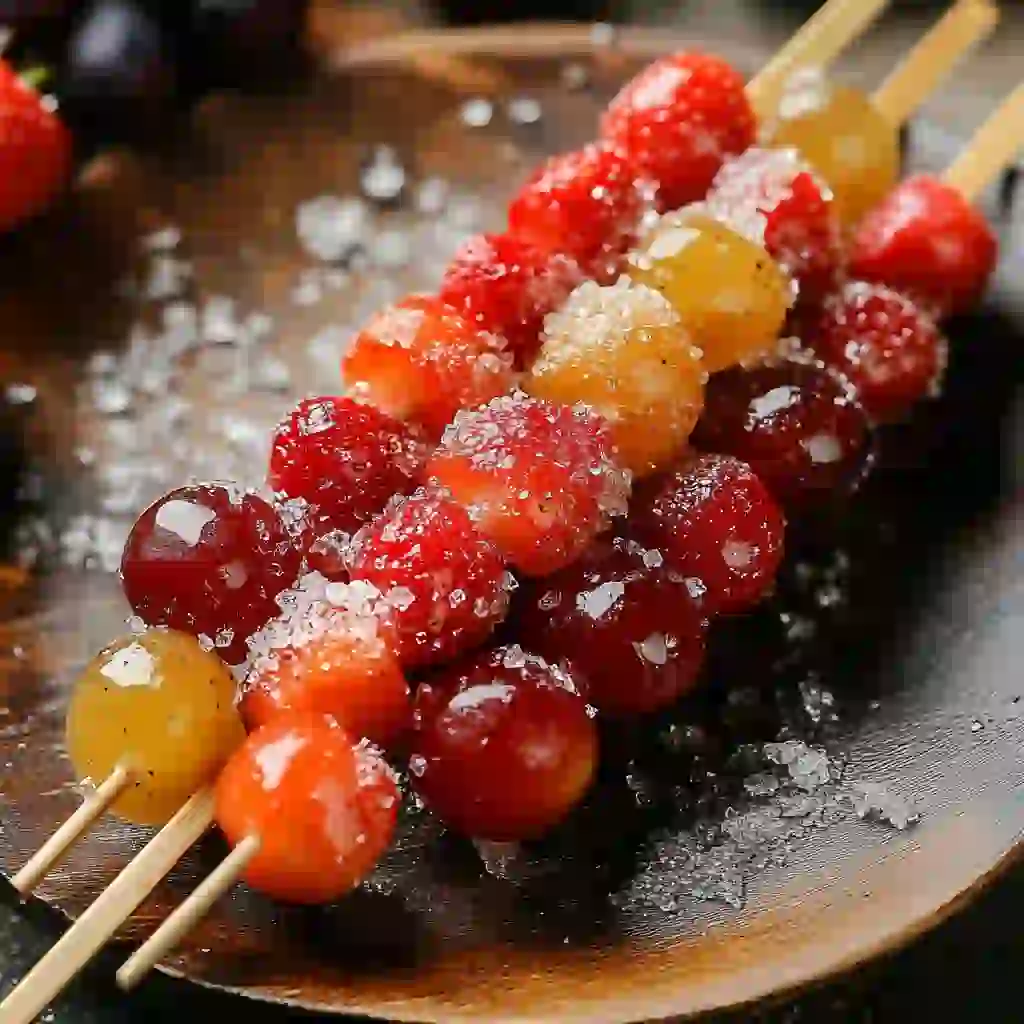
Here are a few international cousins of Tanghulu:
- France: Fruits confits are slow-candied fruits, often used in pastries and sold in elegant tins.
- Japan: Mikan ame and other street candies resemble Tanghulu but are often softer and more citrus-focused.
- India: Murabba—fruits preserved in sugar syrup—leans toward syrupy rather than hard shell but shares the same preservation concept.
- Korea: Kkul-tarae, though not a fruit candy, showcases a traditional Korean candy art using pulled sugar for wrapping sweet fillings.
Each culture finds its own way of honoring fruit through sugar. But Tanghulu stands out because of its simplicity and that unforgettable crack when you bite in.
Tanghulu’s Growing Popularity on Social Media Platforms
Over the last few years, Tanghulu has found a new stage—TikTok, YouTube, and Pinterest. The satisfying crack of the sugar shell has made it a viral hit, with millions of views dedicated to ASMR Tanghulu videos.
People are putting everything from marshmallows to jalapeños on skewers (not all successful!), experimenting with color-dyed sugar shells, glitter toppings, and even themed shapes for holidays. It’s become a canvas for creativity.
What I love most is how this centuries-old treat is now being discovered by home cooks around the world—especially kids and teens making it with their families. That spirit of exploration and tradition aligns beautifully with what Tanghulu has always been: a joyful bite of culture, shared with others.
FAQ Section
What’s the difference between Tanghulu (candied fruit skewers) and candied fruit?
Tanghulu (candied fruit skewers) are made by dipping fresh fruits into hot sugar syrup, creating a glossy, crunchy coating. The fruit inside stays raw and juicy, offering a refreshing contrast.
Candied fruit, however, is slowly simmered in syrup until it becomes soft and fully saturated with sugar. The result is a chewy texture and rich sweetness that differs from the crisp shell of Tanghulu.
Can you use metal skewers for Tanghulu (candied fruit skewers)?
Yes, but be cautious. While metal skewers can hold the fruit firmly, they heat up quickly and may burn your fingers after dipping them into the sugar syrup. That’s why most people stick with bamboo or wooden skewers when making Tanghulu (candied fruit skewers) at home—they’re safer and more traditional.
What fruit skewers are dipped in melted sugar?
That would be Tanghulu (candied fruit skewers)! This popular Chinese treat features fresh fruits like strawberries, grapes, or hawthorn berries threaded onto skewers, then coated in hot melted sugar. Once cooled, the sugar hardens into a clear, crackly shell—giving Tanghulu its iconic texture and shine.
Why can’t you stir Tanghulu (candied fruit skewers) syrup?
When preparing Tanghulu (candied fruit skewers), it’s crucial not to stir the syrup. Stirring causes sugar crystals to form, which ruins the smooth, glass-like finish you want. For the perfect candy coating, allow the sugar and water to dissolve naturally without interference. A pastry brush dipped in water can help prevent crystals from forming on the pan’s edges.
Conclusion
Making Tanghulu (candied fruit skewers) has become one of my favorite ways to blend cultural tradition with culinary creativity. What started as a street snack in China centuries ago now dances across TikTok, party tables, and homemade dessert platters around the world.
From picking the right fruit to perfecting that delicate sugar shell, this dessert teaches patience, balance, and the joy of simplicity. It’s not just about the crunch—it’s about celebrating contrast, flavor, and craft in each colorful skewer.
Whether you’re trying this treat for the first time or putting a modern spin on a centuries-old recipe, Tanghulu invites you to play with sweetness, texture, and style.
For more fun recipes, kitchen experiments, and cultural food stories, follow me on Facebook and get inspired with delicious visuals on Pinterest.
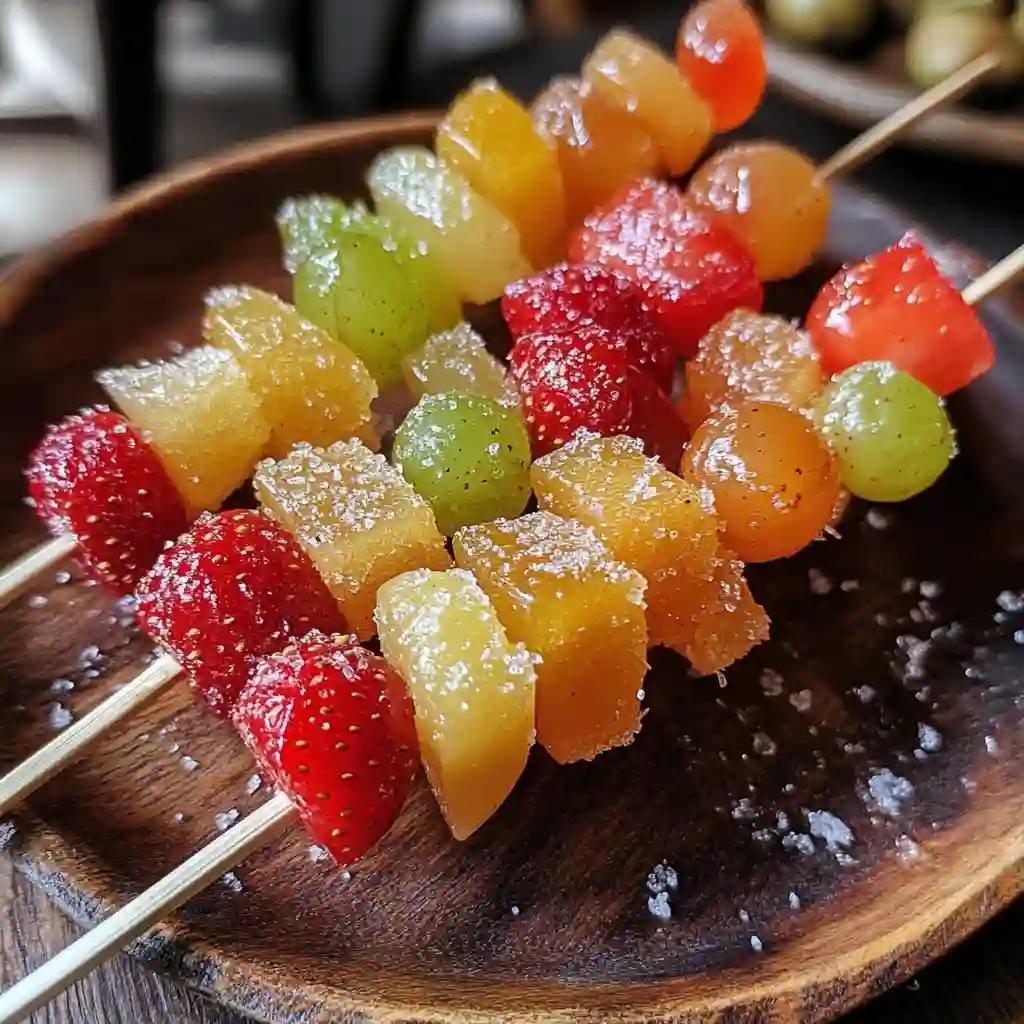
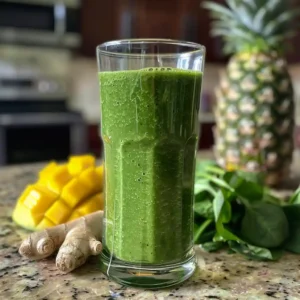
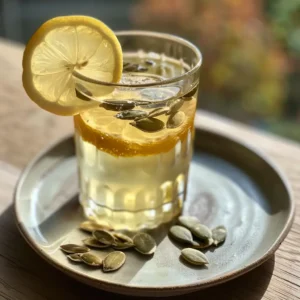
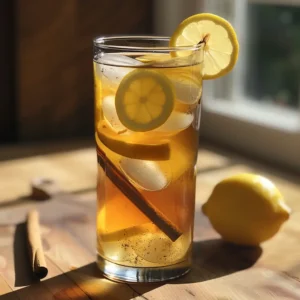




1 thought on “Tanghulu (Candied Fruit Skewers): A Sweet Crunchy Treat You’ll Crave Again and Again”